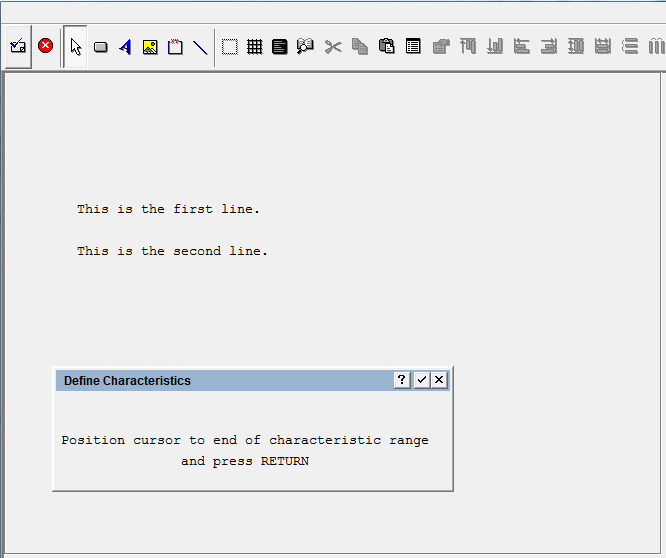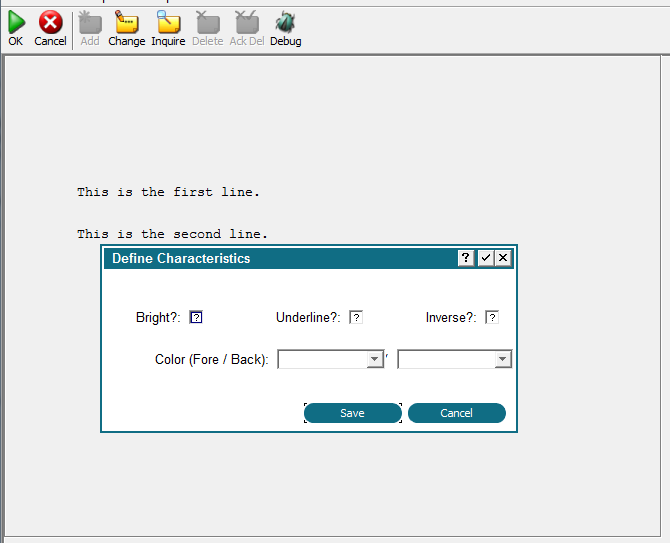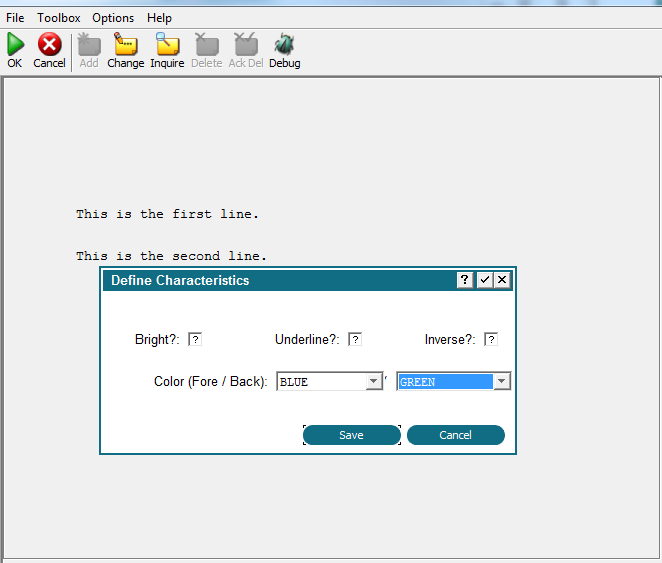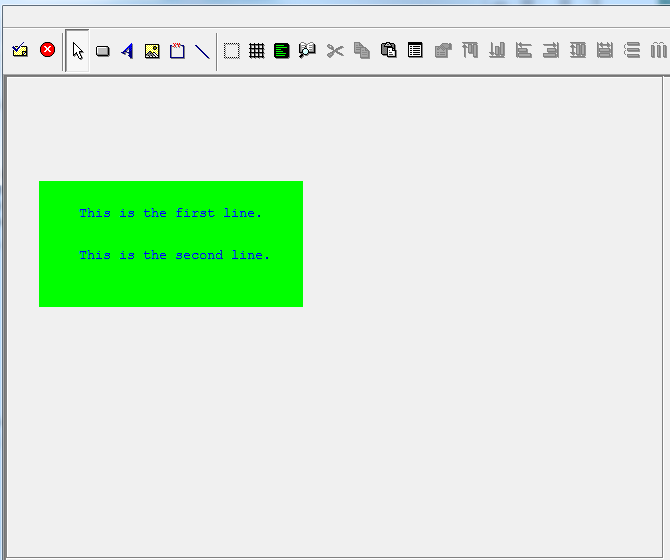Chapter 3-15: Using the Image Editor |
Defining Image Characteristics In addition to defining display attributes for items on images, APPX permits you to establish display attributes (characteristics) for various regions of an image. Such characteristics include bright and inverse video for menu and input images, bold and expanded print for output and inquiry images, as well as underlining and foreground/background colors for all images. Of course, more sophisticated graphical displays are also possible by using the GUI features of the Image Editor. To define the characteristics of a region on an image (or edit an existing region), position the cursor at the starting row/column and, using the keyboard, select option 13. APPX prompts you to position the cursor at the ending row/column and press return. This establishes the size of the region. APPX then displays a Define Characteristics overlay. You can select the characteristics you want to apply by toggling the appropriate checkboxes between 'yes' To set foreground and/or background colors, you can pick a color from the drop-down lists of available choices. When you have made your selections, press return or select Enter
The specifications that follow are a composite of those you see on the respective Define Characteristics overlays. If a specification only displays for a specific type of image, the definition indicates so. Bright? for menu and input images, determines whether or not text within the region appears bright on the screen. Underline? governs whether or not text within the region appears with an underline. Inverse? for menu and input images, determines whether or not text within the region appears with its light and dark areas reversed on the screen. Bold? for output and inquiry images, indicates whether or not text within the region appears bold in the output. Expand? for output and inquiry images, controls whether or not text prints in expanded format. Foreground Color indicates the color the field value is displayed in. Select from a drop-down list of colors. Leave this field blank to use the default foreground color. Background Color indicates the color the field box is displayed in. Select from a drop-down list of colors. Leave this field blank to use the default background color. The default for these fields is blank. |
Application Design Manual "Powered by Appx Software"435 ©2006 By APPX Software, Inc. All Rights Reserved |



